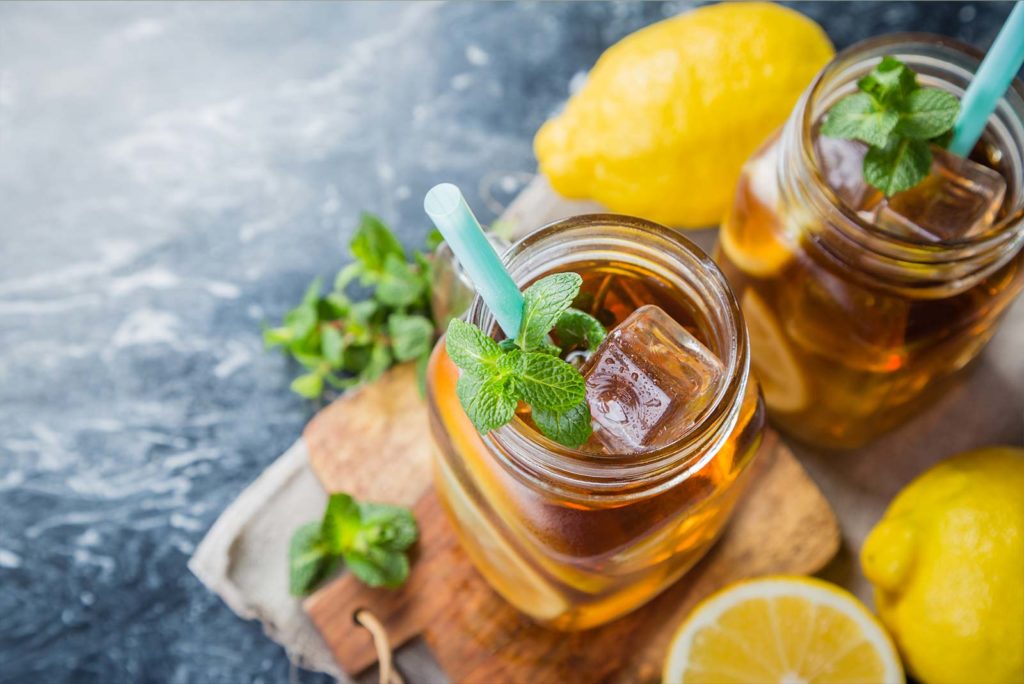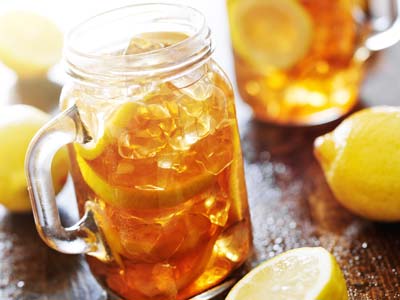
Who doesn’t love a refreshing glass of iced tea as the summer months heat up? If you’re making a batch of tea, harness the power of the sun to make sun tea! It’s simple and eco-friendly: rather than boiling water on your stove or heating it up in the microwave, sunlight provides gentle heating that, over time, can brew the tea leaves you’ve selected.
Making a batch of sun tea is as simple as filling a pitcher of filtered water, placing tea into the pitcher (either as bags or in an infuser), and then placing the pitcher in a bright, sunny spot for three to five hours.
 Why take the extra time? Sun tea has numerous advantages and distinctions compared to traditional tea brewing. Sun tea is environmentally-sensitive, using only natural, ambient energy instead of drawing electricity or gas. In the process, you’ll actually use fewer tea leaves. “One of the benefits of sun brewing includes using less tea per batch,” said Chana Zeller, the marketing and customer service manager at Capital Teas, an Annapolis, Maryland-based company. “While tea bags are commonly used to brew sun tea, we suggest an infuser and loose-leaf tea. That way, you’ll only use as much tea as you want, versus potentially going overboard with more bags than necessary to achieve a certain flavor.”
Why take the extra time? Sun tea has numerous advantages and distinctions compared to traditional tea brewing. Sun tea is environmentally-sensitive, using only natural, ambient energy instead of drawing electricity or gas. In the process, you’ll actually use fewer tea leaves. “One of the benefits of sun brewing includes using less tea per batch,” said Chana Zeller, the marketing and customer service manager at Capital Teas, an Annapolis, Maryland-based company. “While tea bags are commonly used to brew sun tea, we suggest an infuser and loose-leaf tea. That way, you’ll only use as much tea as you want, versus potentially going overboard with more bags than necessary to achieve a certain flavor.”
The odds of needing less tea also go up because of the low temperatures involved. “During sun-brewing, the tea doesn’t boil,” said Zeller. “So when the tea is poured over ice, dilution will not occur. The tea will be stronger with fewer tea leaves.”
That said, depending on the type of tea used, the lower brewing temperatures can make it difficult to draw out the full flavor potential. On the other hand, Zeller noted, “you are far less likely to burn the tea during sun brewing, which can release acidic-tasting elements from the leaves. Adding room temperature water prevents the shocking or burning of loose-leaf tea. Sun brewing ensures a stronger, smoother brew.”
Due to the long steeping time, sun tea is not an instant beverage. A batch must be prepared well ahead of time if it’s intended to accompany a summer evening’s dinner out on the patio. But do not brew for too long, Zeller warned, or the infusion will draw bitter flavors out of the leaves. “Sun brewing is particularly time-sensitive,” she said.
Cover the tea if brewing outside so unwanted plant material or unwelcomed insects don’t spoil the batch. Some tea experts caution that unsafe levels of bacteria or fungi can grow in sun tea. Zeller said that this could be somewhat of an issue when sugar is added in at the beginning, and thus is easily avoided by just stirring in sugar if desired, once your tea is brewed and brought indoors. To further avert any contamination, opt for quality water in the first place. “You can help prevent some bacterial issues by making sure you are using clean, filtered water,” Zeller said.
As for what flavor teas work best, Zeller also has guidance. “We have several teas that brew great in the sun!” she said, referring to Capital Teas’ varieties. “Any fruit tisane makes a great iced tea, but we really love our Island Mango and Lemon Drop.”
This summer, raise a glass to the sun. It does so much for us every day.









